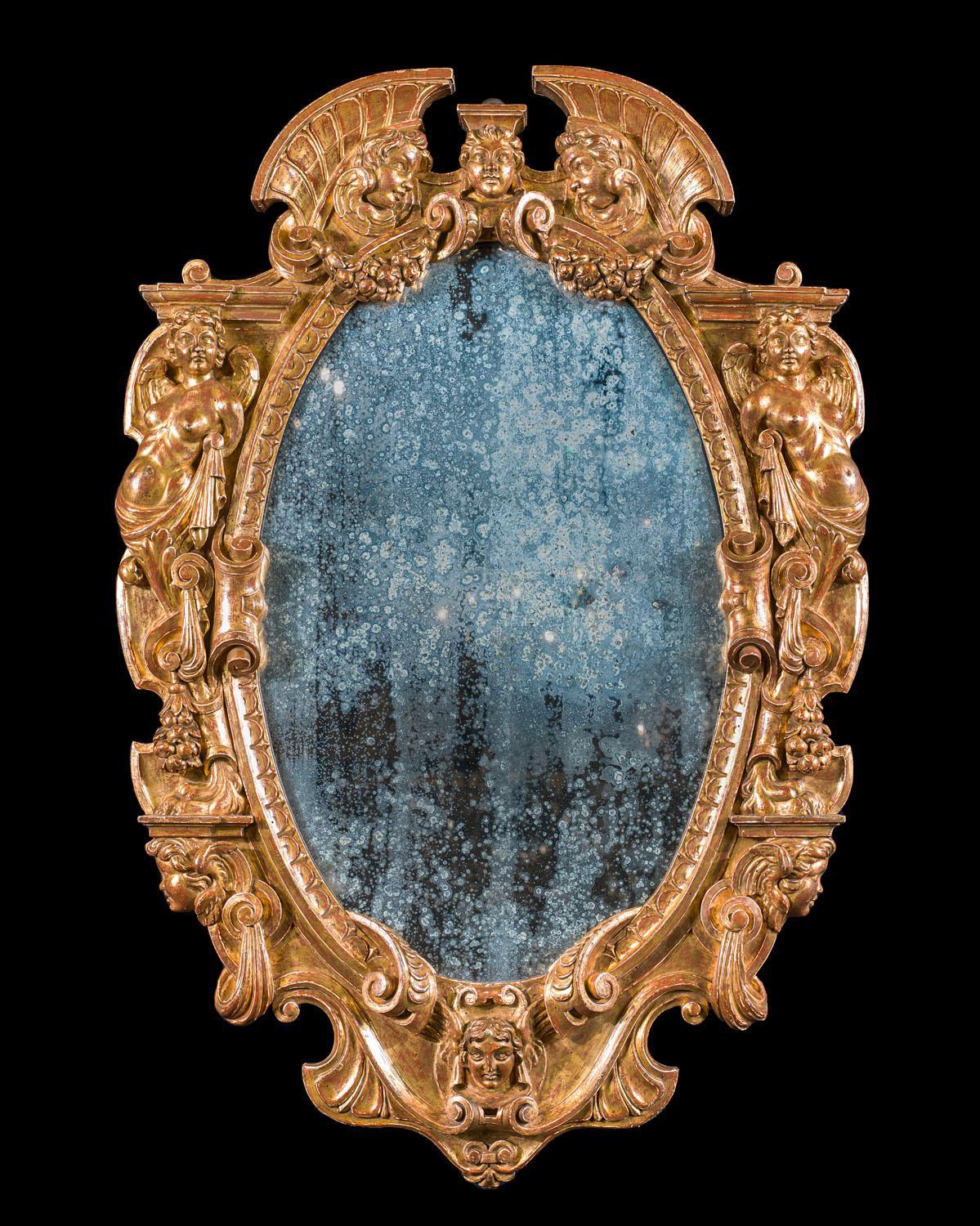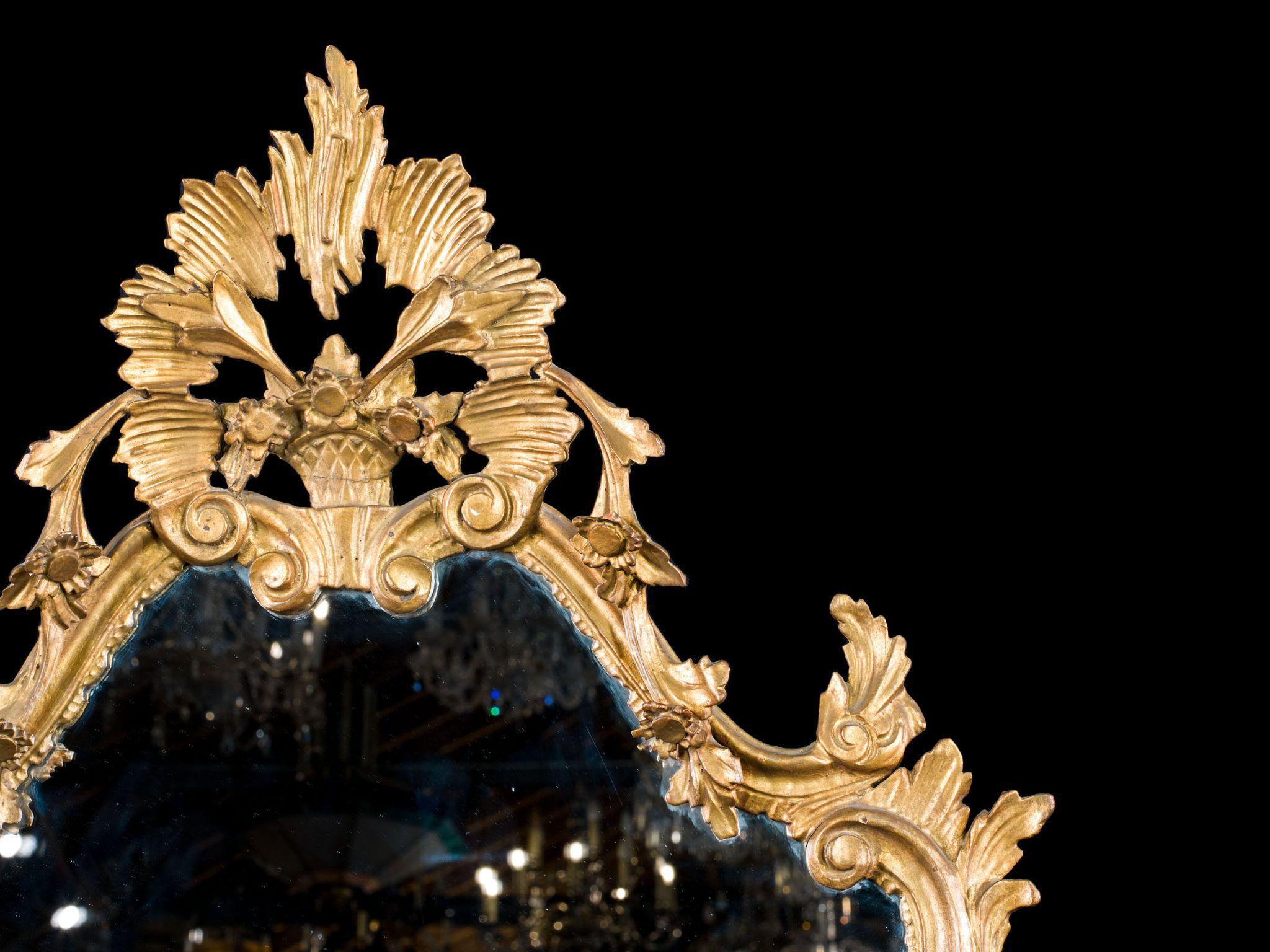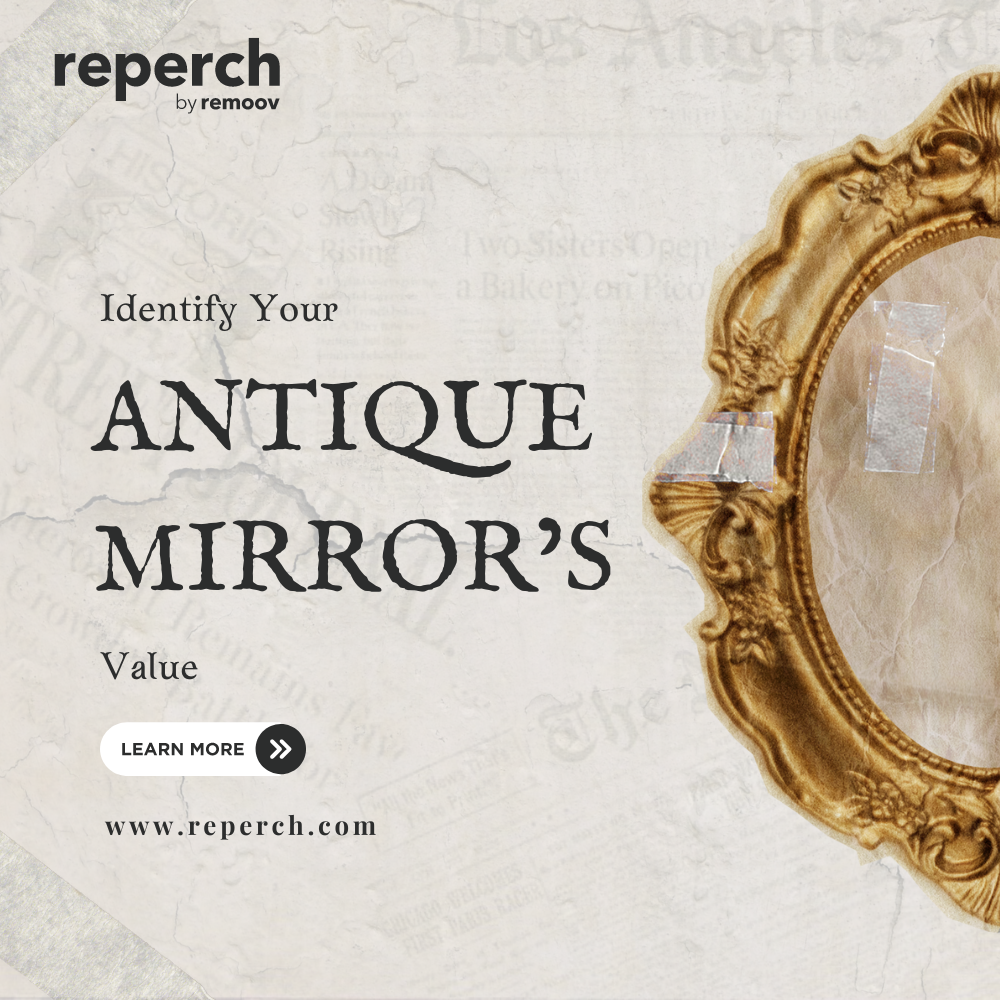Yes, antique mirrors can be worth a lot. Their value depends on age, rarity, and condition.
Collectors and interior designers often seek these mirrors for their charm and history. Antique mirrors hold a special allure. They reflect not just images but also stories from the past. Whether found in a grand estate sale or a dusty attic, these mirrors can be treasures.
Their intricate designs and craftsmanship can make them valuable. But, how do you know if an antique mirror is worth anything? Understanding the factors that affect their value is crucial. This includes the mirror’s age, the quality of the glass, and the frame’s design. Join us as we explore what makes antique mirrors valuable and how to determine their worth.
Introduction To Antique Mirrors
Antique mirrors hold a special charm. Their history and craftsmanship make them unique. Many wonder if these mirrors are worth anything. Let’s explore their value.
History And Origin
Antique mirrors date back centuries. They were first made in ancient times. Egyptians and Romans used polished metal to see their reflection. The technique evolved over time.
In the 14th century, Venice became famous for mirror-making. Venetian glassmakers created high-quality mirrors. These mirrors were a luxury item. Only the wealthy could afford them.
In the 17th century, France became a major producer. The Hall of Mirrors in the Palace of Versailles is a famous example. French mirrors were known for their beauty and elegance.
Cultural Significance
Antique mirrors hold cultural importance. They reflect the art and design of their time. Each mirror tells a story. Many have intricate frames and unique designs.
In some cultures, mirrors are symbols of power and wealth. They were often used in royal palaces and grand homes. Mirrors also played a role in art and literature.
Antique mirrors are valuable for their history. They connect us to the past. Collectors and historians appreciate their significance.
| Era | Origin | Features |
|---|---|---|
| Ancient | Egypt, Rome | Polished metal |
| 14th Century | Venice | High-quality glass |
| 17th Century | France | Elegant designs |

Credit: www.westlandlondon.com
Identifying Antique Mirrors
Antique mirrors hold a unique charm and historical value. Identifying these mirrors can be a fun and rewarding experience. Knowing what to look for can help you determine their worth.
Key Features
Antique mirrors often have distinct features. First, check the glass. Older glass may have bubbles or slight imperfections. This can indicate age. The mirror’s backing is another clue. Early mirrors used tin and mercury. These materials give a slightly blurred reflection.
Next, examine the frame. Antique frames are often ornate and handcrafted. They may show signs of wear. Look for intricate carvings and gilding. The materials used can also be a hint. Wood, bronze, or plaster can suggest an antique origin.
Recognizing Authenticity
Authenticating an antique mirror involves several steps. First, research the style and period. This helps in matching the mirror to a specific era. Study the craftsmanship. Handcrafted details often indicate authenticity.
Look for maker’s marks or labels. These can provide valuable information. Documentation or provenance can support authenticity. Ask for any records or history related to the mirror.
Consult an expert if in doubt. They can provide a professional assessment. Their expertise can be invaluable in verifying the mirror’s authenticity.
Types Of Antique Mirrors
Antique mirrors hold a special place in home décor. Their unique designs and craftsmanship make them valuable. Different types of antique mirrors exist, each with its own charm. Knowing these types helps in appreciating their worth.
Baroque Mirrors
Baroque mirrors are known for their elaborate designs. They often feature detailed carvings. These mirrors usually have gold or silver finishes. Baroque mirrors are grand and luxurious. They add a touch of opulence to any space.
Victorian Mirrors
Victorian mirrors are elegant and refined. They often have intricate floral patterns. The frames are typically made of wood. Victorian mirrors can be found in various shapes. Oval and rectangular are the most common.
Art Deco Mirrors
Art Deco mirrors showcase geometric shapes. They have sleek and modern designs. These mirrors often use materials like glass and chrome. Art Deco mirrors are stylish and sophisticated. They bring a touch of the 1920s glamour.
Factors Affecting Value
When considering the value of antique mirrors, several factors come into play. These factors determine the worth and desirability of such mirrors. Whether you have an heirloom or found a piece at a flea market, understanding these elements can help you gauge its value.
Condition And Preservation
The condition of an antique mirror greatly influences its value. Mirrors with clear glass and minimal damage fetch higher prices. Cracks, chips, or significant tarnishing can reduce worth. Proper preservation also matters. Mirrors kept in stable environments without exposure to moisture or extreme temperatures remain valuable. Regular cleaning and careful handling help maintain their condition.
Rarity And Demand
Rarity plays a crucial role in an antique mirror’s value. Unique designs or limited production pieces are more sought after. The demand for certain styles or eras also affects value. For instance, mirrors from the Victorian era may be more desirable. Collectors often seek specific periods or styles, driving up prices. Trends in interior design can influence demand too. If a particular style becomes popular, the value of such mirrors may rise.
Market Trends
Antique mirrors have always been a subject of fascination for collectors. They carry a charm and history that modern mirrors lack. Understanding market trends can help in evaluating their worth and future value.
Current Market Value
The current market value of antique mirrors varies widely. Factors such as age, condition, and origin play a big role. The design and craftsmanship also affect the price. Here are some key points:
- Age: Older mirrors, especially from the 18th and 19th centuries, tend to be more valuable.
- Condition: Mirrors in good condition fetch higher prices. Any damage or restoration can lower the value.
- Origin: Mirrors from renowned manufacturers or specific regions can be more expensive.
Prices can range from a few hundred to several thousand dollars. Rare and unique pieces can command even higher prices.
Future Projections
Looking ahead, the future projections for antique mirror prices appear promising. Several factors contribute to this trend:
- Rising Interest: There is a growing interest in vintage and antique home decor.
- Limited Supply: The supply of genuine antique mirrors is finite. This scarcity can drive prices up.
- Investment Potential: Collectors view antique mirrors as a stable investment. Their value appreciates over time.
Antique mirrors are not just decorative pieces. They are valuable investments with historical significance. The market trend indicates a positive outlook, making them worth considering.

Credit: www.westlandlondon.com
Collecting Antique Mirrors
Collecting antique mirrors can be an exciting and rewarding hobby. These mirrors have a unique charm and history that modern pieces lack. Whether you are a seasoned collector or a beginner, the following tips will help you in your journey.
Where To Find
Finding antique mirrors can be a fun treasure hunt. Here are some places where you might find them:
- Antique shops: These are dedicated to selling vintage items, including mirrors.
- Flea markets: You can often find hidden gems at reasonable prices.
- Estate sales: These sales often include antiques from homes.
- Online marketplaces: Websites like eBay and Etsy have a wide range of antique mirrors.
Each source offers a unique selection. Take your time exploring these options.
Tips For Collectors
Here are some tips to help you build your collection:
- Research: Learn about different styles and periods of antique mirrors. This knowledge will help you make informed decisions.
- Condition: Check the condition of the mirror. Look for cracks, chips, and signs of restoration.
- Authenticity: Ensure the mirror is truly antique. Look for signs of age and wear.
- Value: Consider the mirror’s value. Rarity, age, and condition affect its worth.
- Networking: Connect with other collectors. They can offer advice and share sources.
By following these tips, you can start or expand your collection with confidence.
Care And Maintenance
Antique mirrors can be valuable treasures, but their worth relies on proper care and maintenance. Preserving the beauty and value of these mirrors involves regular cleaning and occasional restoration. Here’s how you can take care of your antique mirrors to ensure they remain in top condition.
Cleaning Techniques
Cleaning antique mirrors requires special attention to avoid damaging the delicate surfaces. Always use a soft, lint-free cloth to gently wipe the mirror. Avoid using harsh chemicals or abrasive materials. Instead, opt for a mixture of distilled water and mild dish soap.
- Mix distilled water with mild dish soap.
- Dip a soft cloth into the mixture.
- Gently wipe the mirror in circular motions.
- Dry the mirror with a clean, dry cloth.
For stubborn spots, use a cotton swab dipped in the cleaning solution. Be gentle to avoid scratching the surface. Also, clean the frame with a slightly damp cloth, especially if it is made of wood or metal.
Restoration Tips
Restoring antique mirrors can help maintain their value. Small chips or cracks can be repaired with professional help. If the silvering on the back of the mirror is damaged, re-silvering might be necessary.
- Identify the type of damage.
- Consult a professional for major repairs.
- For minor scratches, use a glass polishing kit.
- Consider re-silvering for extensive damage.
Always handle the mirror with care during restoration. Use gloves to prevent fingerprints. Also, keep the mirror in a stable, secure position while working on it.
Proper care and maintenance can significantly enhance the longevity and value of your antique mirrors. Regular cleaning and occasional restoration ensure they remain beautiful and valuable for years to come.
Investment Potential
Antique mirrors are not just beautiful decor pieces. They hold significant investment potential for collectors and enthusiasts. Owning an antique mirror can be a wise financial decision. These mirrors often appreciate over time, making them valuable assets.
Long-term Value
Antique mirrors often increase in value as they age. Their historical significance and craftsmanship contribute to their worth. Collectors seek mirrors from specific periods or styles, which can drive up prices. Owning a well-preserved antique mirror means your investment will likely grow in the long run.
The rarity of certain antique mirrors also plays a role. Limited availability means higher demand. This scarcity can make a significant difference in resale value. Even a small scratch or imperfection can add to the mirror’s story and charm, enhancing its appeal to buyers.
Resale Opportunities
Reselling antique mirrors can be profitable. To maximize your returns, consider the following:
- Condition: Well-maintained mirrors fetch higher prices.
- Provenance: Mirrors with a known history are more valuable.
- Market Trends: Stay updated with current demand and trends.
Platforms such as online auctions, antique fairs, and specialized dealers offer various resale opportunities. Understanding the market and timing your sale can lead to significant profits.
Resale success often depends on your knowledge of the mirror’s origins and historical context. Educate yourself on different styles and periods to better understand your mirror’s potential worth.
Notable Examples
Antique mirrors often hold significant historical and monetary value. Their unique designs, craftsmanship, and historical importance make them fascinating pieces. In this section, we’ll explore notable examples of antique mirrors. These mirrors have captured the interest of collectors and enthusiasts alike.
Famous Antique Mirrors
Some antique mirrors have become famous over time. These mirrors often belong to royalty or notable figures. An example is the Hall of Mirrors in the Palace of Versailles. This mirror collection is renowned for its grand design and historical significance. Another example is the Cheval Mirror, associated with the French nobility. These mirrors not only reflect beauty but also a rich history.
Case Studies
There are several case studies of valuable antique mirrors. One such case involves a Venetian mirror from the 18th century. This mirror sold for a substantial amount at an auction. Its intricate design and age contributed to its high value. Another case study is of a Rococo mirror from the 1700s. This mirror featured ornate carvings and gold leaf. It fetched a high price due to its craftsmanship and historical significance.
These examples highlight the worth of antique mirrors. They show how historical context and design influence value. Collectors seek such pieces for their uniqueness and history.

Credit: reperch.com
Frequently Asked Questions
How Can I Tell If My Antique Mirror Is Valuable?
To determine if your antique mirror is valuable, examine its age, craftsmanship, and condition. Look for unique features, original glass, and historical significance. Consulting a professional appraiser can provide an accurate valuation.
What Makes An Antique Mirror Collectible?
An antique mirror becomes collectible due to its age, rarity, craftsmanship, and historical significance. Unique designs, high-quality materials, and well-preserved condition also contribute to its collectibility.
Are Antique Mirrors A Good Investment?
Yes, antique mirrors can be a good investment. Their value often appreciates over time, especially if they are rare, well-preserved, and have historical significance.
How Should I Maintain An Antique Mirror?
To maintain an antique mirror, clean it gently with a soft cloth and avoid harsh chemicals. Keep it away from direct sunlight and humidity to prevent damage.
Conclusion
Antique mirrors hold unique charm and history. Their value can vary greatly. Condition, age, and rarity play key roles. Always research before buying or selling. Collectors often seek well-preserved pieces. An expert appraisal helps determine true worth. Consider your reasons for interest.
Sentimental value can outweigh monetary value. In the end, antique mirrors offer both beauty and potential investment.

My name is Carson Mackey and I specialize in mirror/glass. With over 8 years of experience in the glass/mirror industry, I am well-versed in all aspects of fabrication, repair and installation. I take great pride in providing my clients with the best quality of service and products. I am passionate about my work and strive to help my clients realize their vision.
Honestly, I am dedicated to providing the best services and products to my customers and I’m always open to learning new techniques and working with advanced materials. Basically, this is a place where I will share my thoughts and experiences on Mirror. And this website (http://mirrortopics.com) is an outlet of my deep passion for Mirror.
I want to clear about MirrorTopics that it’s not any agent or hired organization. It fully customize by me. So I hope, posted information will Realistic and authentic. Although I will do enough research before posting but if you notice any wrong or mistake on my article, please contact with me without any hesitation. As well as you can suggest me about content quality, authentication and so on by using our Contact US page. Thank you my friend to support me.
